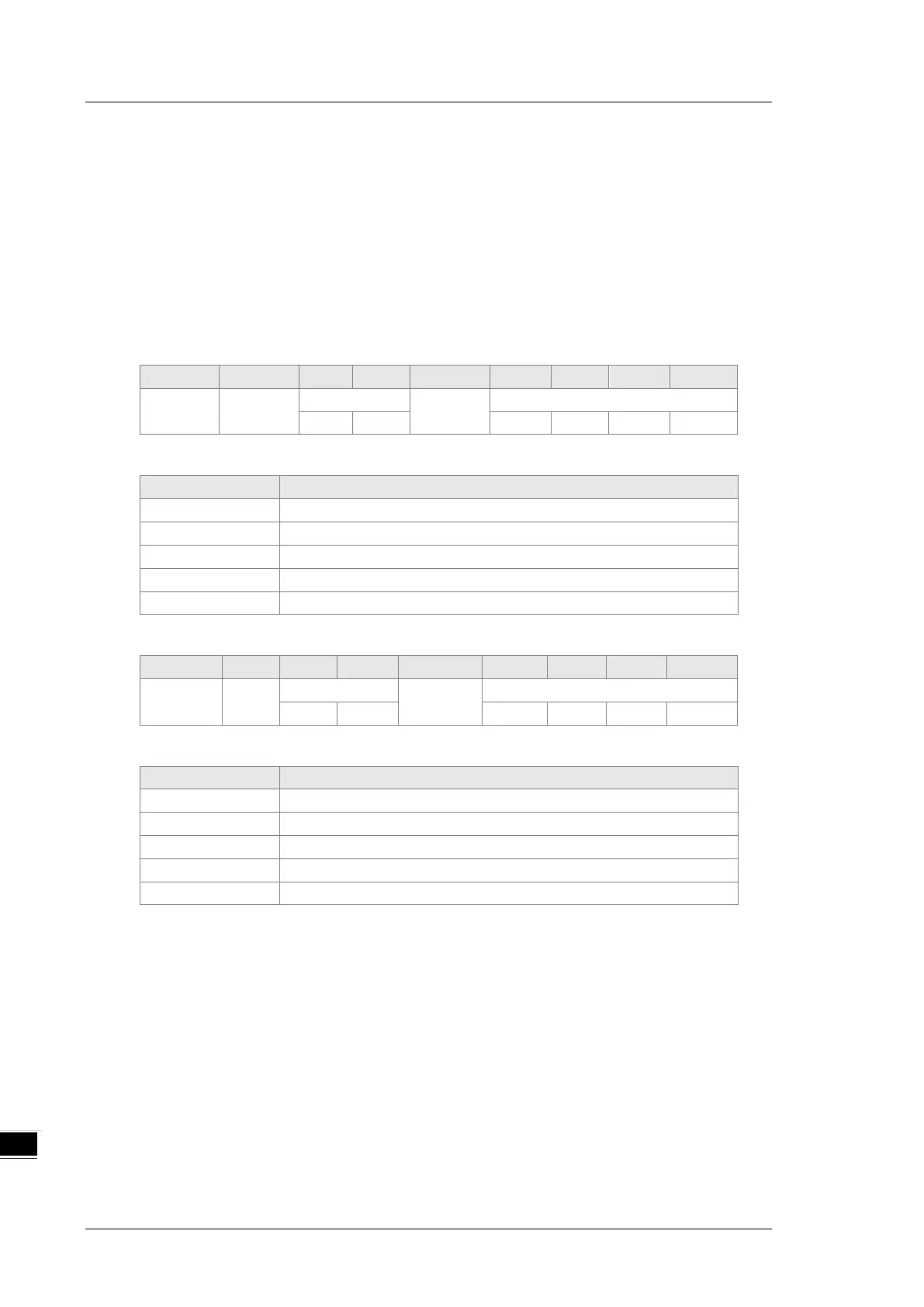DVP-ES3 Series Operation Manual
The SDO message contains the index and subindex information used to position the objects in the
object dictionary, and the composite data structure can easily be passed by the SDO visit. After the
SDO client sends the reading/writing request, the SDO server replies. The client and the server can
stop SDO transmission. The requested message and the reply message are separated by different
COB-IDs.
The SDO can transmit the data in any length. If the data length is more than 4 bytes, the data must be
transmitted by segment. The last segment of the data contains an end flag.
The following table shows the structures of the SDO requested message and reply message.
The format of the requested message:
600 (Hex)
Requested
code
Object
subindex
The definition of the requested code in the requested message:
Stopping the current SDO function
The format of the reply message:
580(Hex)
Reply
code
Object
subindex
The definition of the reply code in the reply message:
43 Reading 4-byte data
4B Reading 2-byte data
Stopping the current SDO function
3. NMT (network management object)
The CANopen network management conforms to the master/slave mode. Only one NMT master exists in
the CANopen network, and all other nodes are considered to be slaves. NMT includes three services:
module control, error control, and boot-up services.
Module control services
The master node in the CANopen network controls the slave by sending commands. The slave
receives and executes the command, and does not need to reply. All CANopen nodes have internal
NMT states. The slave node has four states: initialization, pre-operational, operational, and stop
states. The following diagram illustrates the device states.

